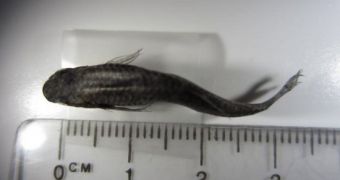Researchers with the Southern Environmental Law Center in the United States have recently completed an investigation into how coal ash pollution affects fish living in North Carolina's Sutton Lake, and their findings are troubling, to say the least.
In a paper detailing the outcome of their study, the researchers explain that, according to evidence at hand, coal ash kills about 900,000 of the fish in this lake on a yearly basis.
Since the lake is a fishing one, these deaths are estimated to translate into $4.5 - $7 million (€3.31 - €5.15 million) losses annually.
Evidence suggests that young fish exposed to this environmental pollutant develop deformities and abnormalities, and die long before their reach maturity.
Thus, out of 1,400 fish collected from this lake between May and September 2013, 28% were found to be deformed.
The scientists who looked into this issue suspect that coal ash has this effect on Sutton Lake's fish population due to the fact that it contains noteworthy amounts of selenium, a chemical compound that has been previously documented to affect the development of marine wildlife.
“Selenium is well-known to cause deformities and abnormalities in young fish. Deformities of all sorts of bony structures in the fish – everything from the mouth, to the skull, to the spine, to the tail, to the fins. You name it,” explains Professor Dennis Lemly, not working with Wake Forest University, as cited by Think Progress.
The Professor and his fellow researchers have reasons to believe that the coal ash and the selenium present in North Carolina's Sutton Lake come from a nearby coal-fired power plant that is owned and operated by Duke Energy.
The coal-burning unit at the plant in question was retired about a month ago but, until then, it used Sutton Lake to keep cool. The plant's operators maintain that, although some coal ash has worked its way into the lake, the resulting selenium concentrations are by no means high enough to cause damage.
Researchers disagree, and say that, as the deformed fish recently discovered prove, there is more than enough of this pollutant in the lake to upset natural ecosystems.

 14 DAY TRIAL //
14 DAY TRIAL //